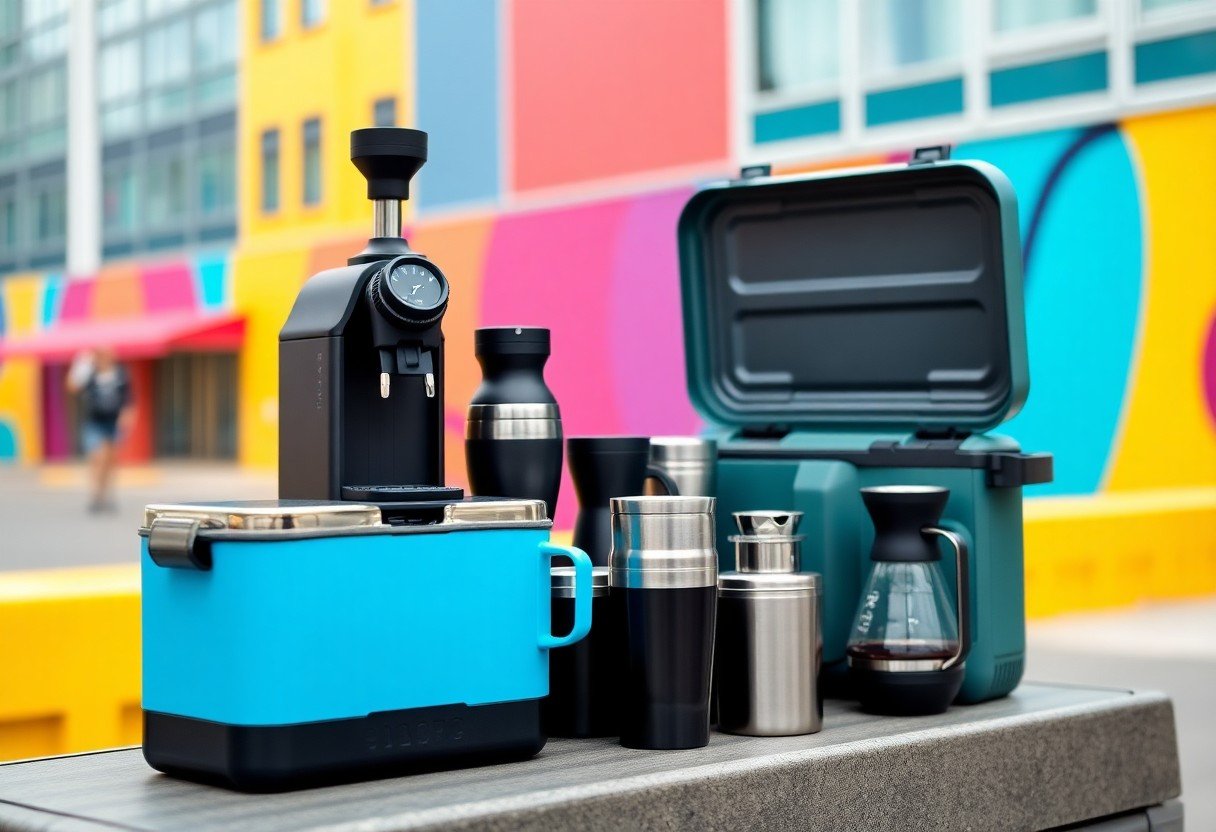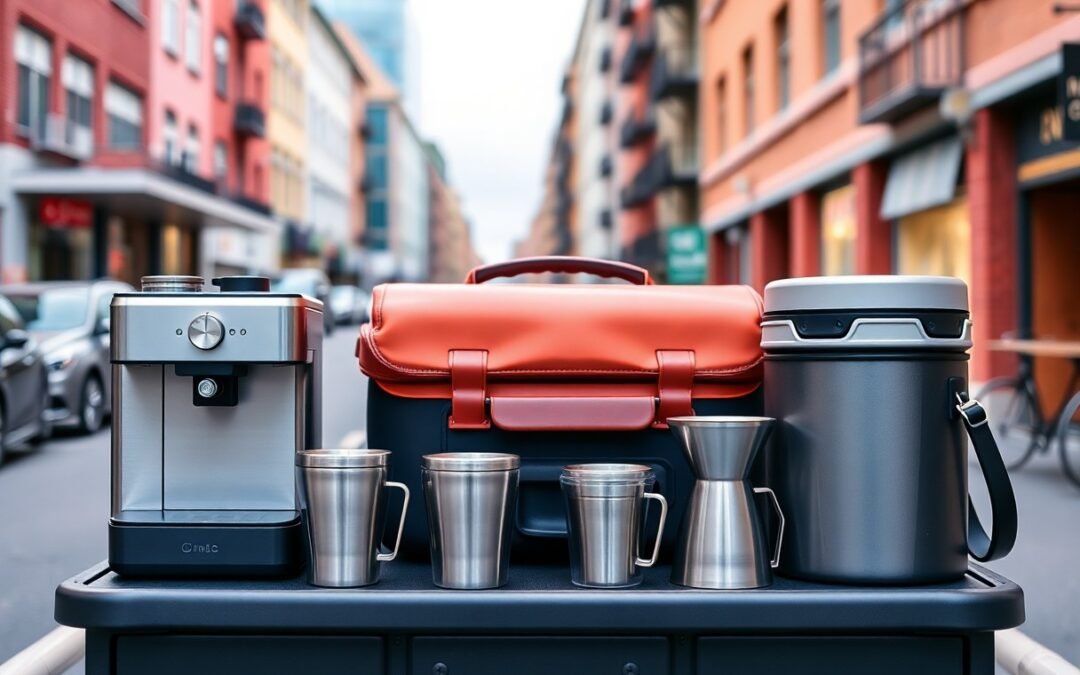This guide will empower you to select the ideal equipment for your mobile coffee setup, ensuring you serve top-quality brews on the go. You’ll learn about the crucial gear required to maximize efficiency and elevate your coffee experience. From espresso machines to grinders, and everything in between, we’ll help you make informed decisions that cater to your specific needs and preferences. Equip yourself with the knowledge to create a standout mobile coffee business that delights your customers and keeps them coming back for more.
Crafting Your Coffee Identity
Your coffee identity shapes every aspect of your mobile coffee business, from the beverages you serve to the ambiance you create. It reflects your values, quality standards, and the unique flavors you bring to your customers. Establishing this identity not only differentiates you from competitors but also builds a loyal customer base that resonates with your vision and tastes.
Defining Your Niche: Specialty vs. Classic
Selecting a niche is vital in positioning your mobile coffee business. If you lean towards specialty coffee, focus on unique brewing methods, rare bean origins, and artisanal approaches. In contrast, a classic approach emphasizes traditional brewing techniques and popular flavors, appealing to a broader audience. Each choice influences your marketing strategies and customer interactions.
Understanding Your Target Audience: Who Are You Brewing For?
Defining your target audience helps tailor your offerings and marketing strategies effectively. Consider demographics like age, lifestyle, and preferences when designing your menu and service style. Are you catering to busy professionals seeking a quick caffeine fix, or are you targeting coffee aficionados who appreciate a slow, crafted experience?
Analyzing your target audience goes beyond basic demographics; it involves understanding their behaviors, preferences, and trends. For example, millennials prioritize sustainability and ethical sourcing, so offering organic or fair-trade options can resonate well. Additionally, consider local market trends—if your area has a thriving café culture that favors unique blends and brewing techniques, your menu should reflect that. Engaging with your audience through social media can also provide insights, allowing you to refine your offerings to meet their expectations and build lasting relationships.

Essential Gear for the Ambitious Barista
Building a successful mobile coffee setup requires selecting the right equipment that not only matches your skill level but also meets your customer’s expectations. From espresso machines to grinders, each piece of gear plays a pivotal role in delivering quality brews. Knowing the importants helps you create your unique coffee experience while maintaining efficiency and consistency on the go.
Choosing the Right Espresso Machine: Manual vs. Automatic
Your choice between a manual or automatic espresso machine depends on your barista skills and desired level of control. Manual machines offer a hands-on approach, giving you complete control over the brewing process, while automatic machines streamline operations, ensuring consistent shots with minimal effort. Evaluate your workflow to determine which aligns best with your vision and speed requirements.
Grinders That Grind: Importance of Quality and Consistency
Investing in a high-quality grinder is non-negotiable for producing exceptional coffee. Consistent grind size is directly linked to flavor extraction; uneven grounds lead to bitter or underwhelming brews. Ensure you choose a grinder capable of fine-tuning settings for various brewing methods to maintain that perfect taste in every cup.
A high-quality burr grinder, for example, can significantly enhance flavor by delivering consistent particle sizes, optimizing extraction efficiency. Most professionals recommend grinders that allow for precise adjustments, enabling you to cater to different brewing methods on your mobile setup. Brands like Baratza and Mazzer are noted for their reliability and accuracy, making them ideal choices for enhancing your coffee’s flavor profile, ultimately satisfying your customers’ taste buds.
Brewing Techniques: Pour Over, French Press, or Nitro Cold Brew?
Selecting the brewing technique can elevate your coffee offerings and appeal to diverse customer preferences. Each method brings out unique flavor profiles: pour over for clarity, French Press for richness, and Nitro Cold Brew for smoothness. Understanding these nuances allows you to craft a menu that caters to various tastes seamlessly.
Pour over techniques can highlight the nuances in a single-origin coffee, allowing subtle flavors to shine, while French Press produces a full-bodied cup, appealing to those who enjoy a richer experience. Nitro Cold Brew, with its creamy texture and refreshing qualities, attracts customers looking for a unique twist. Tailoring your brewing options not only diversifies your menu but also showcases your expertise, bolstering your coffee identity and attracting a broader clientele.
Setting Up for Success: Layout and Design
Efficient layout and design can dramatically impact the success of your mobile coffee setup. Optimize the arrangement of your equipment and supplies to promote a smooth workflow, ensuring that every element serves a purpose. Pay attention to the traffic flow of customers and your movement, aiming for an organized space that minimizes disruptions while maximizing service speed. Smart planning can turn a small area into a highly functional workspace, enabling you to serve more customers efficiently without compromising quality.
The Flow of Your Mobile Setup: Efficiency in Space Utilization
To enhance efficiency, consider the natural flow of your mobile coffee setup. Position your espresso machine and grinders close to each other, with milk frothers and syrups within easy reach. This proximity reduces movement time and helps maintain a steady workflow during peak hours. Organizing stocks like cups, lids, and supplies nearby allows for seamless transitions, ensuring you spend more time serving customers rather than scrambling for items.
Branding Your Cart: Aesthetic and Practical Considerations
Your mobile coffee setup is not just about functionality; it also represents your brand. Thoughtful design elements, such as color schemes and logos, create a memorable visual impact while helping you stand out in the market. Select materials that are not only appealing but also durable for frequent use. Incorporating practical elements, like a chalkboard for daily specials or a well-lit menu, enhances customer interaction and elevates your overall service experience.
Investing in branding can significantly influence customer loyalty and attraction. For instance, a cart adorned with a unique logo and a cohesive color palette establishes identity and fosters trust in your brand. Incorporate practical branding elements, such as branded cups or napkins, to reinforce recognition whenever customers enjoy your coffee. Additionally, consider seasonal decorations to keep the visual appeal fresh and relevant, enhancing your brand’s personality while aligning with current trends to draw attention and boost sales. A well-branded cart not only attracts customers but also cultivates a strong, recognizable presence in a competitive market.
The Logistics of Mobility: Transport and Power Solutions
Your mobile coffee setup hinges on reliable transport and power provisions to maintain efficiency and service quality. Choosing the right vehicle is key; it must accommodate your equipment while offering easy access for setup and breakdown. Understanding how to power your equipment in various locations, whether through built-in solutions or generators, is equally significant for uninterrupted service. This section explores best practices for transport safety and how to assess your power requirements effectively.
Best Practices for Transporting Equipment Safely
Identifying Your Power Needs: Generators vs. Built-in Solutions
Navigating Local Regulations and Licensing
Understanding local regulations and licensing is imperative for a successful mobile coffee setup. These rules dictate where and how you can operate, including zoning laws, health codes, and business licenses. Research your local municipality’s requirements to ensure compliance and avoid potential fines that could derail your business. Tailor your setup to meet the specific demands of your area, as regulations can vary significantly from one city to another.
Understanding Health Codes and Safety Regulations
Health codes dictate how you must handle food and beverages to ensure public safety. These regulations often include requirements for sanitation, food storage, and equipment cleanliness. Familiarize yourself with your local health department’s guidelines, as many municipalities conduct inspections to verify compliance before granting you the green light to operate. Adhering to these codes not only keeps your customers safe but also builds your credibility within the community.
Securing Necessary Permits: Street Vending to Event Participation
Obtaining the necessary permits is vital for legally operating your mobile coffee business. Depending on your location, permits may include street vendor licenses, food service permits, and special event permits for festivals or markets. Each permit will have specific application procedures and fees, so it’s wise to contact local regulatory bodies early in your planning process to understand your obligations.
In many cities, a street vending permit gives you the right to sell coffee in public spaces, but this often comes with restrictions regarding locations and times. Event participation typically requires additional permits, especially for larger gatherings or festivals. For example, the city of Los Angeles requires vendors at special events to provide proof of liability insurance and food safety training, along with a valid health department certification. Checking with the event organizers can also provide insight into specific requirements, allowing you to prepare in advance and ensure a smooth operation at both street locations and events.
Final Words
Drawing together the insights from this guide, selecting the best equipment for your mobile coffee setup involves careful consideration of your specific needs, budget, and target market. You should prioritize quality and efficiency in your choices to ensure a seamless operation and an outstanding customer experience. By investing in the right tools and understanding your operational requirements, you will enhance your mobile coffee business’s potential and create a unique offering that stands out in the competitive market.
FAQ
Q: What type of coffee machine is best for a mobile setup?
A: A portable espresso machine or an automatic coffee brewer is ideal for mobile setups. Look for machines that are compact, easy to use, and can operate on different power sources or without electricity.
Q: How do I select the right grinder for my mobile coffee setup?
A: Opt for a lightweight, manual grinder or a compact electric grinder that offers consistency in grind size. Look for models with durable materials and a size suitable for your coffee volume.
Q: What kind of power source do I need for a mobile coffee setup?
A: Choose a reliable power source based on your equipment’s requirements. Options include battery-powered devices, generators, or portable power stations, ensuring they can support the wattage of your coffee machines.
Q: Which accessories are important for a mobile coffee bar?
A: Key accessories include a water kettle, milk frother, measuring tools, and portable serving equipment like cups and containers. Additionally, consider storage for beans and other ingredients.
Q: How can I efficiently transport my coffee equipment?
A: Use sturdy, padded bags or cases designed for coffee equipment to protect your gear during transit. Consider modular organizations to keep everything accessible and reduce setup time.

